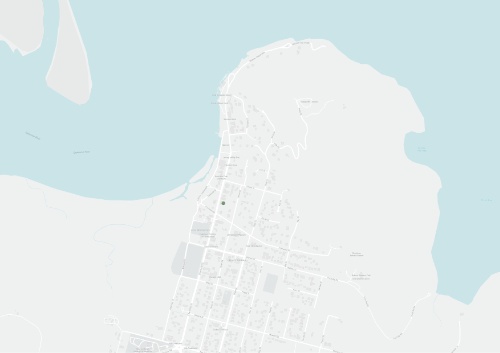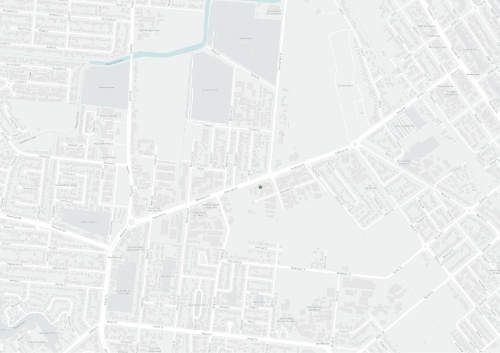Plan Explorer
Filter by:
Region
Topic
Sector
Other
Results
Aurukun waterways wetland and coastal draft management plan 2009 (draft)
StrategicThis draft plan was the product of a contract between Wik Projects and the Department of Natural Resources and Water, created on behalf of the Natural Heritage Trust. This report focuses predominately on the experiences and aspirations of Wik, Wik Way, and Kuugu people.
Western Cape Communities Trust investment strategy 2011-2022
This investment strategy released in 2011 presents an in-depth explanation of the funding allocation for the Western Cape Communities Trust, established by the Western Cape Communities Co-existence Agreement for a number of purposes such as natural resource management and funding allocation.
Western Cape Chamber of Commerce strategic plan 2010-2012
Obsolete CommunityThis strategic plan was developed following a review of the 2007 Western Chamber of Commerce Strategic Plan during a workshop in Weipa on the 20th of November 2009.
Western Cape Communities Trust & Western Cape Communities Coordinating Committee strategic plan 2009-2012
Obsolete StrategicThis document was released by the Western Cape Communities Trust (WCCT) and Western Cape Communities Coordinating Committee (WCCCC) as a plan to deliver on 4 key objectives within the mining lease area surrounding Weipa.
Port of Weipa environmental management plan
Current StrategicThis environmental management plan was released by the North Queensland Bulk Ports Corporation as part of their environmental program with the objective of acting as a reference document for all then-current and potential users of the Weipa port.
Cape York Peninsula Land Use Strategy: Land Use Program: Aspects of Commercial and Non-Commercial Fisheries of Cape York Peninsula
CYPLUSCYPLUS commissioned WBM Oceanics Australia to prepare this report which describes the level of use of commerical and non-commerical fisheries, factors affecing the environmental condition of said fisheries and habitats, and management issues relating to each of the fisheries and habitats in 1994.
Draft Cape York Peninsula Natural Resource Management Plan (2005)
Obsolete Government PolicyThe aim of the Plan is to ensure that natural resources are well managed, and protected where required, for the benefit of us all and future generations. The Plan aims as far as possible to be consistent with other regional strategies.
Cape York Peninsula Regional Biosecurity Strategy
Current StrategicCape York Natural Resource Management (Cape York NRM), Cook Shire Council (CSC), Weipa Town Authority, Wujal Wujal, Hopevale, Lockhart, Mapoon, Napranum, Aurukun, Pormpuraaw and Kowanyama Aboriginal Shire Councils and the Northern Peninsula Area Regional Council (NPARC) have collaboratively devel
Great Barrier Reef report card 2012 and 2013
Current InformationalThe Great Barrier Reef report card is part of the Reef Quality Water Protection Plan and measures the progress from 2009 to 2013 regarding the Reef Water Quality Protection plan 2009 targets.
Reef Water Quality Protection Plan 2009
Superceded StrategicThe intention of the Reef Water Quality Protection Plan 2009 was to ensure that the water quality of the Great Barrier Reef Lagoon was improved by addressing non-point source pollution caused by large-scale land use along the eastern coastline.
Laura Rangers weed and fire plan
Current CommunityThis poster outlines the objectives, location, strategy, planned outcomes, and implementation of the Laura Ranger's Weed Management Strategy.
Recently added
Cape York Peninsula Land Use Strategy Thematic Report 2 Of 3 Land Use and Economy
CYPLUSThe land on the Cape York Peninsula has historically been utilised by different cultures for different uses. Aboriginal land use was managed by a complex set of cultural practices involving some ecological manipulation (principally by fire) and a degree of active resource replenishment.
Cape York Peninsula Land Use Strategy Thematic Report 1 Of 3 Natural Resources and Ecology
CYPLUSThe Cape York Peninsula is a diverse and important region of tropical Australia covering 13,720,000 hectares.
Cape York Peninsula Land Use Strategy Overview of Current Resources, Land Uses and Issues
CYPLUSThe Cape York Peninsula is a diverse and important region of tropical Australia covering 13,720,000 hectares.
Cape York Peninsula Land Use Strategy: National Resources Analysis Program Airborne Geophysical Data for Cape York Peninsula
CYPLUSThe Airborne Geophysical Survey Project had compiled and upgraded four major regional data sets from Cape York including magnetic, gamma-ray, gravity, and height of ground above sea level.
Cape York Peninsula Land Use Strategy: Land Use Program: Animal and Weed Pests of Cape York Peninsula
CYPLUSAustralia has long been an isolated evolutionary cradle of unique species of plants and animals. The evolutionarily recent invasion of a whole host of animal and plant species has caused significant problems for the ecosystem.
Cape York Peninsula Land Use Strategy: Land Use Program: Areas Containing Significant Species or Habitats Outside the Existing National Parks and Reserves Network on Cape York Peninsula
CYPLUSThe Conservation and Natural Heritage Assesment Project was one of the 24 projects undertaken as part of the CYPLUS Land Use Program.
Cape York Peninsula Land Use Strategy Thematic Report 3 Of 3 Society and Culture
CYPLUSThere are many histories of the Cape York Peninsula and these may see the same events from differing perspectives.
Cape York Peninsula Land Use Strategy: Land Use Program: Aspects of Commercial and Non-Commercial Fisheries of Cape York Peninsula
CYPLUSCYPLUS commissioned WBM Oceanics Australia to prepare this report which describes the level of use of commerical and non-commerical fisheries, factors affecing the environmental condition of said fisheries and habitats, and management issues relating to each of the fisheries and habitats in 1994.
Cape York Peninsula Land Use Strategy: Natural Resources Analysis Program: Coastal Environment Geoscience of Cape York Peninsula
CYPLUSThe Coastal Environment Geoscience Survey project utilised a variety of information and techniques to compile the coastal geoscientific information necessary for the developent of a land use strategy for Cape York Peninsula.
Cape York Peninsula Land Use Strategy: Natural Resource Analysis Program: Ecology and Conservation the Golden Shouldered Parrot
CYPLUSThe Golden-shouldered Parrot (Psephotus chrysopterygius) once occured accross much of central Cape York however it is now cofned to a handfull of small areas with small populations.

